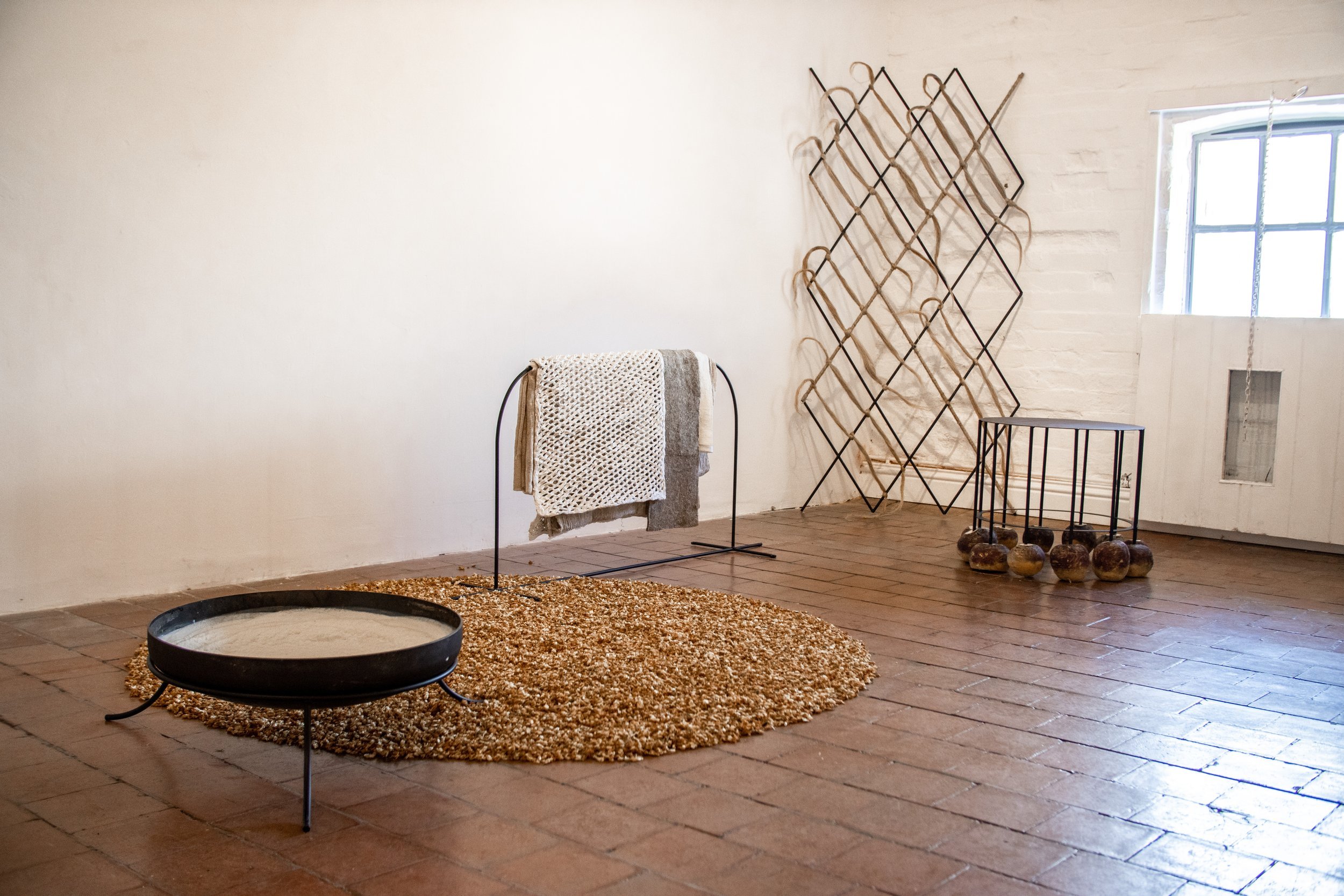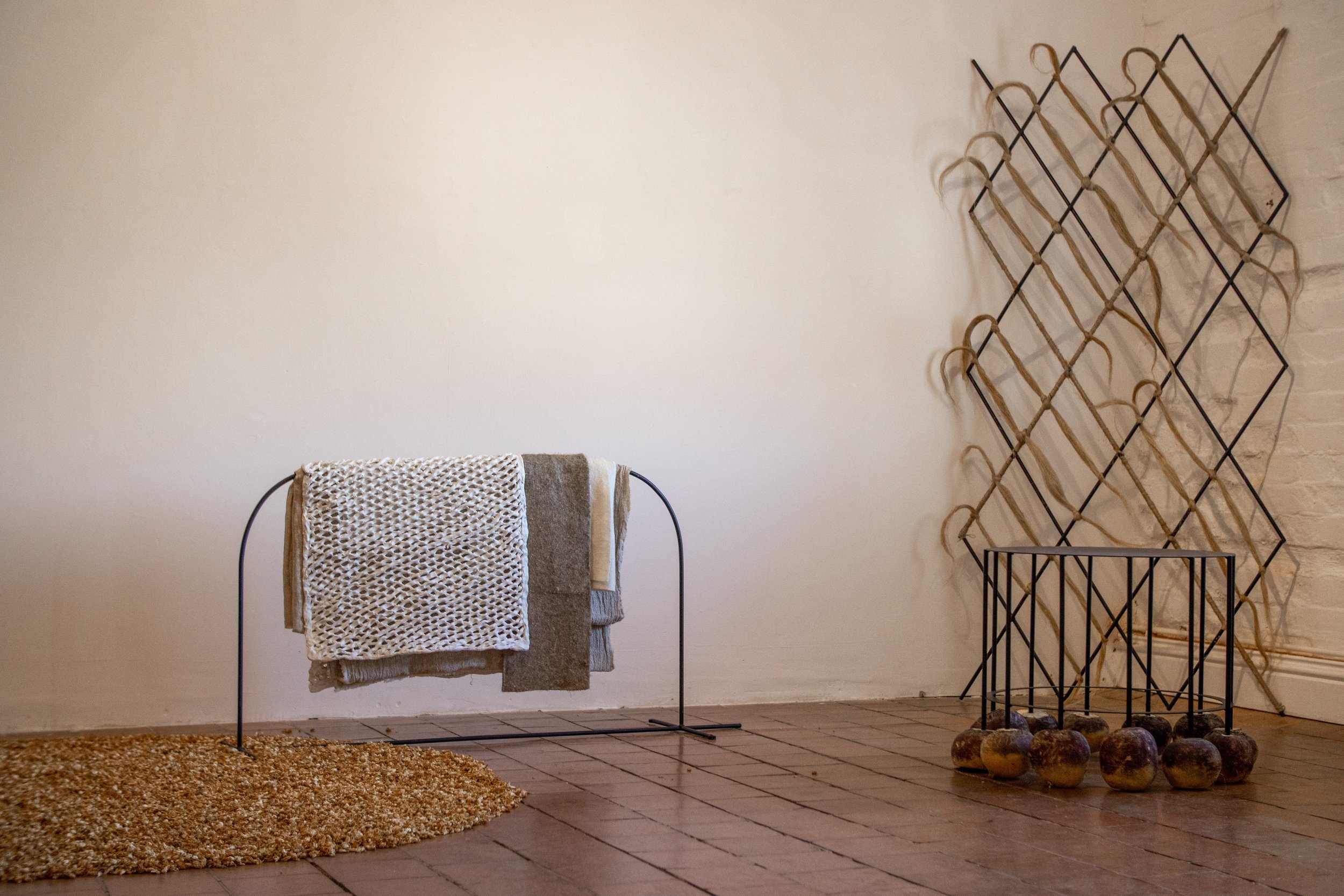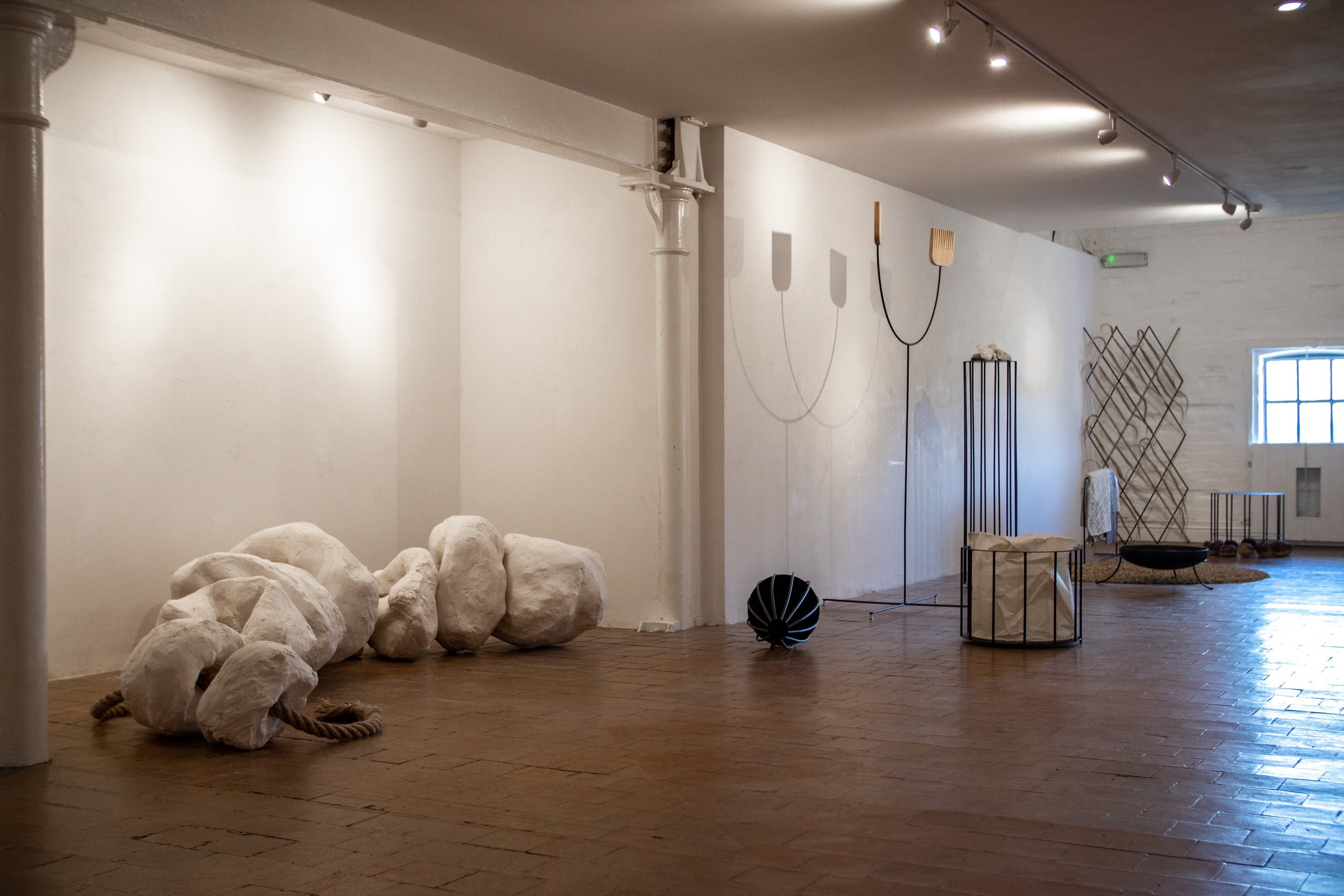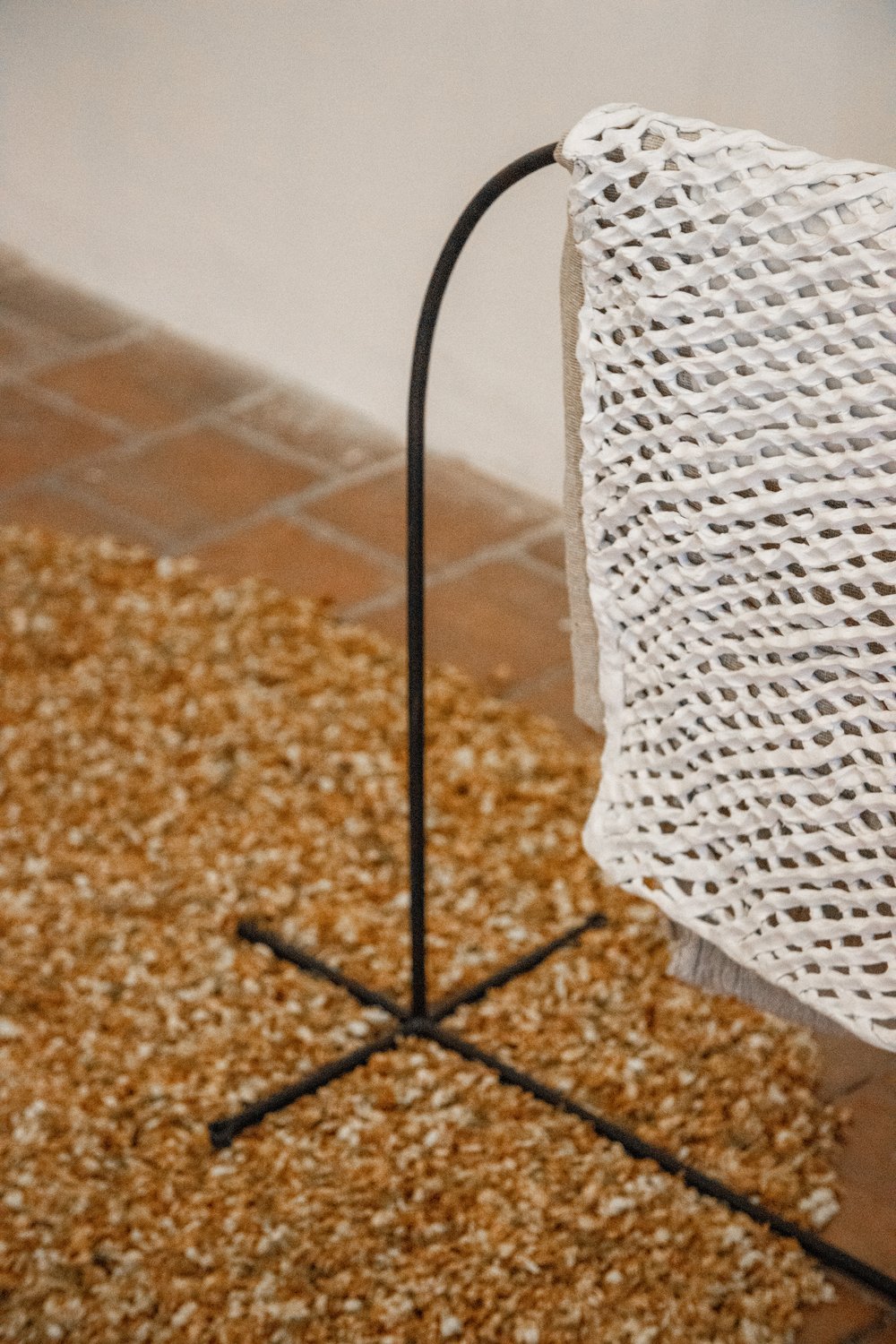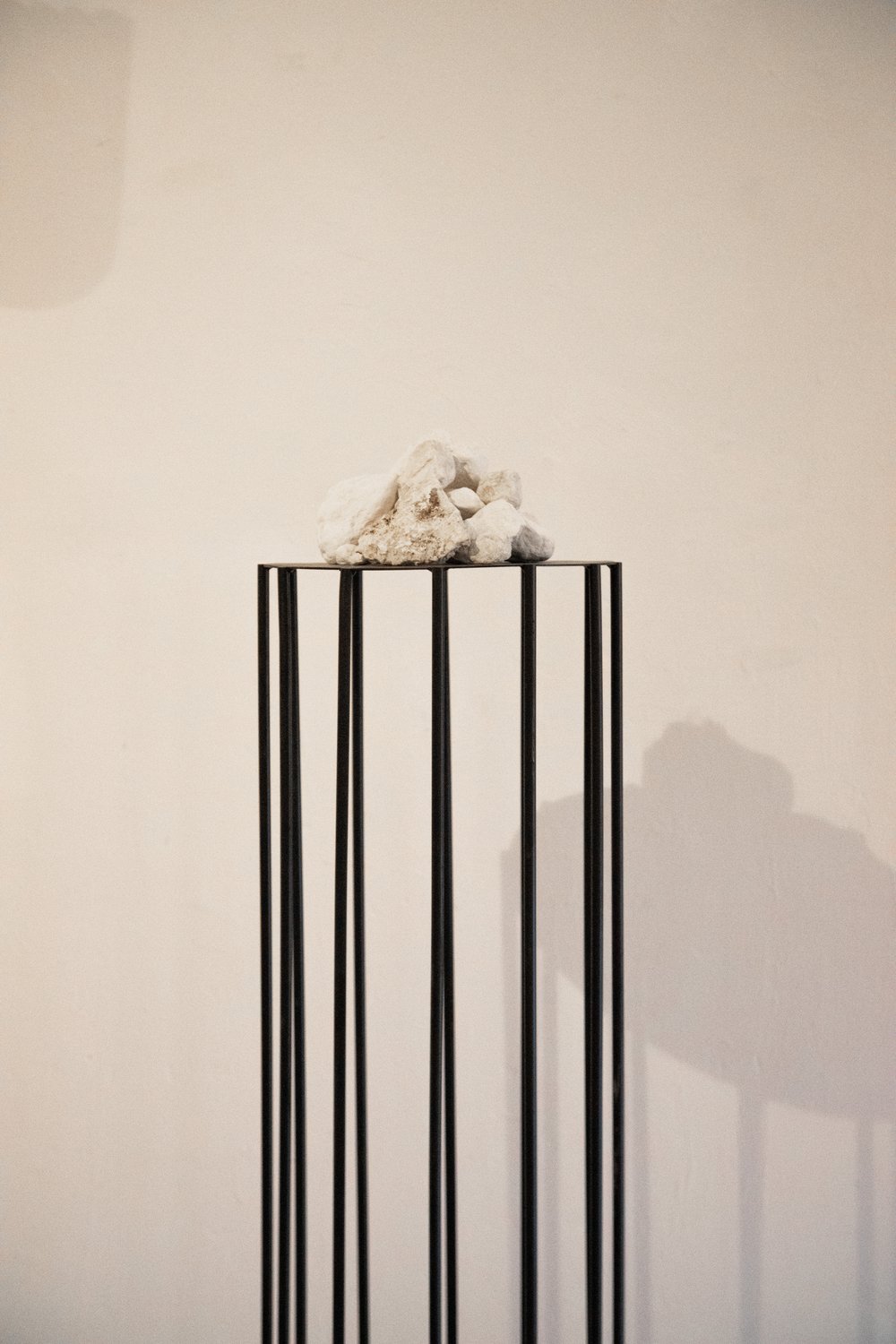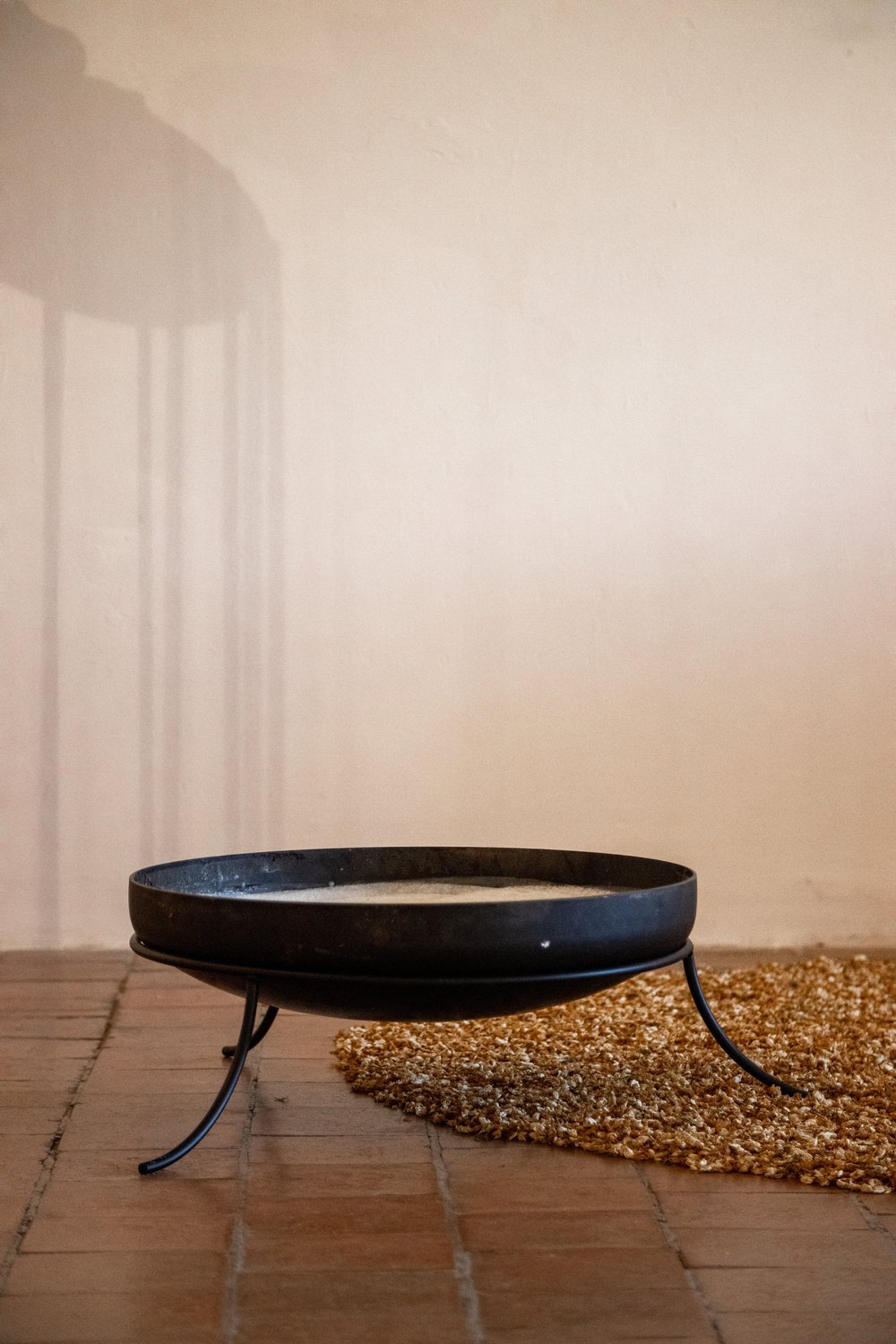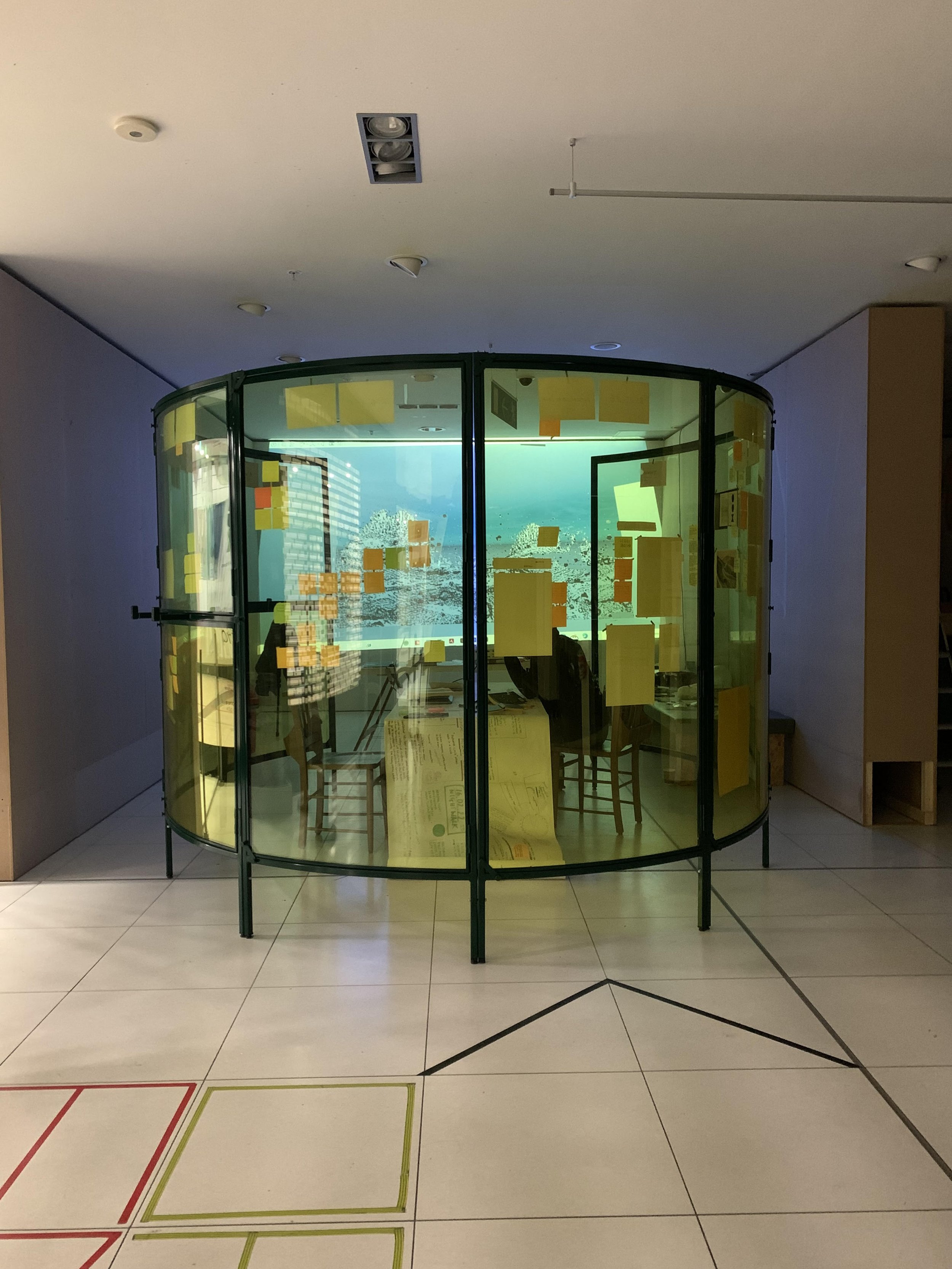The Night Season: Tool/Toy Project
Research & development funded by Jerwood Arts, supported and hosted by originalprojects; & The Cut Halesworth
This dreamlike assemblage of fantasy furniture refers to amulets, tools, processes and materials which emerged from our research into social and political histories of night time. To furnish is to provide and equip with something needed: this furniture is to our research what symbols are to dreams; ambiguous yet indicative, something tangible to hold onto in the depths of the intangible.
We are taught when we are young that night is for rest not for play, but engaging with darkness and our subconscious in playful ways can bring meaning, clarity and introspection to our lives. Through history and mythology, we examine the role of darkness and dreaming in private and public life. In `an era that favours modernity's unnatural rhythms' (1), we return not nostalgically but radically to past ways and imagine how they might `provide the means to building more livable futures' (2).
Night Season explores the overlap of dreaming and magical thinking, both of which can provide a sense of comfort and security during times of uncertainty. These two states of altered consciousness can be tools for exploring the subconscious mind, and to connect with spiritual or metaphysical realms.
Believing in something has helped our species make sense of the world throughout the ages, offering hope and motivation in difficult times. Magical thinking can be a trauma response, especially in situations of powerlessness or helplessness. When faced with trauma or distressing situations, from the personal to the global, some turn to magical thinking, believing that a certain ritual or specific object will protect them. Though this can seem at odds with the workings of `spiritually complex post-secular lives' (3), magical thinking is an essential element in the spirit of speculation that is demanded of us all.
Night Season research booth at PRIMEYARC, Great Yarmouth
Magical thinking often involves belief in forces that can influence the physical world with rituals, symbols, or other forms of symbolic communication. Similarly, dreaming can be seen as a form of symbolic communication that takes place in the subconscious mind, and can provide insight into our deepest desires, fears, and hopes. Both involve a certain degree of suspension of rational thought and an opening up to the possibility of new insights and perspectives.
Darkness is instrumental to rest, and a facilitator of dreams and visions. As daylight fades, colour dissipates and the familiar shapes and landscapes blur and abstract. The city empties, and the earth grows quiet. In the absence of light, our minds begin to amplify neural noise and flow freely. The onset of darkness would traditionally signal freedom from labour, and a shield from oversight and moral judgement. We may dream in our native tongues, and endeavour to find `an intermediate space, where the business of life does not intrude, where the passing movement lingers and becomes truly the present' (4). Night Season conjures notions of alternative ways of spending the night hours, in quiet wakefulness, rest, play, ritual and reflection.It is not only our species that requires release from the day. Artificial lights fragment the ancient patterns that have shaped the evolution of living organisms. Modern indifference to darkness creates a network of exhaustion. For diurnal as well as nocturnal creatures, darkness is vital to human and non-human thriving, sharing, dreaming.
A long line of thinkers (Naomi Klein, Bell Hooks, Helen Cixous, Judith Butler, Sigmund Freud, Nancy Chodorow, Walter Benjamin, D. W. Winnicott, and Ursula Le Guin to name a few), understand dreaming as an essential tool for processing experiences and traumas, as well as imagining fantastical situations, places and futures.
References:
Ekrich, R., 2005. A History of Night Time. London: W&N.
Harraway, D., 2016. Manifestly Harraway. Minnestota: University of Minnesota Press.
Sutcliffe, J.,ed. 2021. Magic: Documents of Contemporary Art. London: Whitechapel Gallery.
Hawthorne, N., 1837. (2001). Twice Told Tales. London: Modern Library.
